Seodongyo Theme Park (서동요 테마파크)
0m 15654 2021-06-10
616, Chungsin-ro, Buyeo-gun, Chungcheongnam-do
+82-41-832-9913
Seodongyo Theme Park is an open film set studio in a huge 33,000 square meter plot of land. The theme park offers various sets from Goryeo to Joseon dynasty as well as royal residences of Baekje dynasty, the commoners’ village, the village of the nobles and more. The set was the backdrop of various dramas including “Ballad of Seodong (2005), “The Great Sheer (2012)” and more. Visitors can also engage in various experience programs.
Munheonseowon Confucian Academy (문헌서원)
6.9 Km 7460 2020-06-18
66, Seowon-ro 172beon-gil, Seocheon-gun, Chungcheongnam-do
+82-41-953-5895
Munheonseowon Confucian Academy was established to pay tribute to the memory of Lee Gok (1298-1351) and Lee Saek (1328-1396) who were well-respected for their writings and character. The school was originally built in 1594, but was burnt down during the Imjin War (1592-1598). It was rebuilt in 1610 and became a legislated private institute in 1611.
The academy consists of an educational area and a shrine. Mortuary tablets of five Confucian scholars including Lee Jong-hak, Lee Ja, Lee Gae as well as Lee Gok and Lee Saek were enshrined at the school.
Munheon Hotel [Korea Quality]문헌전통호텔[한국관광 품질인증]
7.0 Km 0 2023-12-04
49-1 , Seowon-ro 172beon-gil, Seocheon-gun, Chungcheongnam-do
+82-41-953-5896
Munheon Hotel is a hanok stay in Seocheon, Chungcheongnam-do. Wooden floors and beams, earthen walls and stone footings, ondol-heated floors and wooden patios - these are the distinctive features that make hanok so deeply unique. All four buildings in the hotel have these features; each has two comfortable guest rooms, and it’s also possible to rent the entire hotel for groups or conferences.
Hansan Ramie Fabric Cultural Festival (한산모시문화제)
7.6 Km 24172 2024-03-28
1089 Chungjeol-ro, Seocheon-gun, Chungcheongnam-do
+82-41-950-4256
Hansan Ramie Fabric Cultural Festival continues the tradition of recognizing Hansan ramie fabric, or "mosi" in Korean, registered as a UNESCO Intangible Cultural Heritage of Humanity. Visitors can experience weaving traditional Korean natural fiber as well as try on mosi clothing. Various other programs and events are planned including a fashion show, designer competition, and more.
Seocheon Hansan Mosi Museum (서천한산모시관)
7.6 Km 3485 2018-09-06
1089, Chungjeol-ro, Hansan-myeon, Seocheon-gun, Chungcheongnam-do
Mosi (Ramie Fabric) is one of Hansan’s special local products, along with sogokju liquor. Seocheon Hansan Mosi Museum explains the history and process of making mosi, as well as provides visitors with a chance to see it being made by skilled artisans. With the assistance of Bang Yeon-ok, visitors can try their hand at the process, designated Important Intangible Cultural Heritage No. 14, or try other experience programs such as natural dying and making useful items.
Daejosa Temple (Buyeo) (대조사 (부여))
8.5 Km 20717 2020-01-08
112, Seongheung-ro 197beon-gil, Imcheon-myeon, Buyeo-gun, Chungcheongnam-do
+82-41-833-2510
Below Seongheungsanseong Fortress (built in 501 during the Baekje Kingdom) in Buyeo is an ancient temple called Daejosa (great bird temple). Inside the temple grounds stands a giant standing stone Buddha statue looking toward the east. The temple, which was founded during the 5th year of the Baekje Kingdom, has an interesting legend behind its origin.
According to the legend, an old monk fell asleep after praying under a large rock on the slopes of Seongheungsan Mountain. In his dream, a large bird glowing in gold flew in from the west and sat on the rock where Daejosa currently stands. While the bird continuoulsy flapped its wings, a ray of light shone on the rock and it was there that the statue of Avalokitasvara Bodhisattva appeared.
The old monk had the same dream at the same time for many days. He recounted his dream to the seongju (castle lord), who then reported it to King Seong of Baekje. The king interpreted the dream as a sign that it was the right time to move the capital of Baekje to Sabi (now Buyeo) and ordered the construction of a large temple at the location that appeared in the dream. The temple was so big that even at a hurried pace, it would still take 10 years to build. Workers had to work day and night, and every time the workers felt tired, birds would come singing to brighten up the atmosphere so that the workers can forget the fatigue and continue working. Hence, the temple was completed after only five years. Because of the golden bird, the temple was named Daejosa, literally meaning "temple of a great bird."
The rock on which Avalokitasvara Bodhisattva appeared in the dream was recreated as a stone statue of a Buddha. This standing stone Maitreya Bodhisattva statue is a fine work of sculpture which, along with the stone Bodhisattva of Gwanchoksa Temple (Treasure No. 218), is a representative heritage of the early Gorye period.
In front of Wontongbojeon Hall (a hall enshrining Avalokitasvara Bodhisattva) stands a pagoda. In the old days, the stone pagoda used to have only the cover stones but as the pagoda body stones were found, the structure was completely restored in 1975. This pagoda is assumed to have been built in the early days of the Goryeo Kingdom.
Buyeo Garimseong Fortress (부여 가림성)
8.7 Km 7147 2020-08-11
167, Seongheung-ro 97beon-gil, Buyeo-gun, Chungcheongnam-do
+82-41-830-2880
Garimseong Fortress is a stone fortress built on the lower reaches of the Geumgang River to protect Sabiseong Fortress, the capital of the Baekje dynasty. The fortress' parking lot is only 200 meters away from the southern entrance, allowing visitors to easily access and enjoy the view from this historical fortress. By ascending the stairway by the rocky cliff, a large tree comes into view. Known to be over 400 years old, this tree is called the "Love tree of Seongheungsan Mountain" and has even made an appearance in the drama "Seodongyo (200)." The fortress is also popular as a sunrise spot, serving as Buyeo-gun’s New Year's Eve festival venue.
Seocheon Dalgogae Mosi Village (서천 달고개모시마을)
8.8 Km 20691 2021-03-10
5, Hwahan-ro 504beon-gil, Seocheon-gun, Chungcheongnam-do
+82-41-950-6380
In Seocheon Dalgogae Mosi Village, the long-standing tradition of Hansan mosi (ramie fabric) is passed down and preserved in the hands of the village women. Hansan mosi is also called fine ramie because of the time-consuming and labor-intensive process involved. The village offers a variety of mosi-themed experience programs for visitors with the help of experienced village artisans. Programs include ramie plant harvesting and ramie fabric weaving. Visitors can also try some highly nutritious ramie rice cakes and tea.
Sinseong-ri Reed Field (신성리 갈대밭)
9.2 Km 10782 2019-09-04
125-1, Sinseong-ri, Seocheon-gun, Chungcheongnam-do
+82-41-952-9525
As one of Korea’s top four fields of reeds, Sinseong-ri Reed Field (nearly 60,000 pyeong) has also been popularized as a filming location of the mega-hit Korean movie, “JSA.”
To protect the natural environment, only 2-3% of the entire area of field of reed has been developed into a park. About 100,000 migratory birds (40 species) pass through every winter (especially in December and January). In fall, the golden fields of reeds create a romantic atmosphere along the banks of the glittering Geumgang River.
Nearby tourist attractions include a riverbank resort, Wolmyeong Park (in Gunsan), Chunjangdae Beach (in Seocheon-gun) and Hansan Ramie Fabric Museum.
* Period to see the golden fields: July to February
Iksan Sungnimsa Temple (숭림사(익산))
10.8 Km 7496 2024-04-07
495-57, Baekje-ro, Iksan-si, Jeonbuk-do
+82-53-862-6394
Sungnimsa Temple is one of the major temples in Iksan under Geumsansa Temple and was believed by some to have been built by monk Jinpyo Yulsa during the reign of King Gyeongdeok (742-764) during the Silla period. Others believe that the temple was established during the first year of King Chungmok of the Goryeo dynasty in 1345. Sungnimsa Temple was named in honor of great monk Bodhi-Dharma, who practiced seated Zen meditation for nine years at Sorimsa Temple located deep inside Sungsan Mountain in China. The temple was burnt down during the Imjin War (1592-1598), leaving only Bogwangjeon Hall. Bits and pieces of the temple were later restored in 1697, 1819, and 1892.
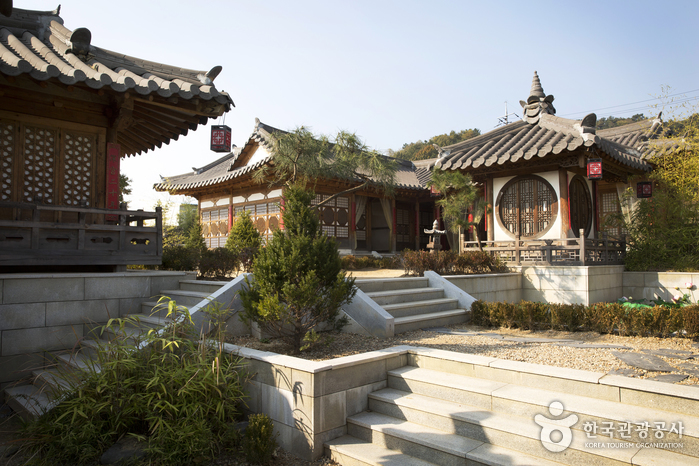
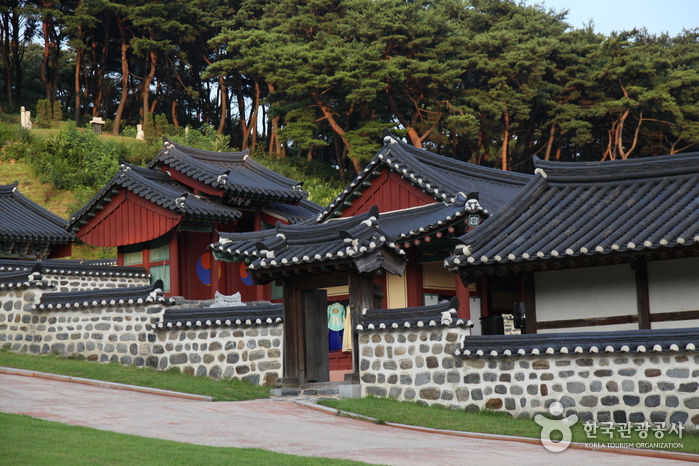
![Munheon Hotel [Korea Quality]문헌전통호텔[한국관광 품질인증]](http://tong.visitkorea.or.kr/cms/resource/63/3042263_image2_1.jpg)
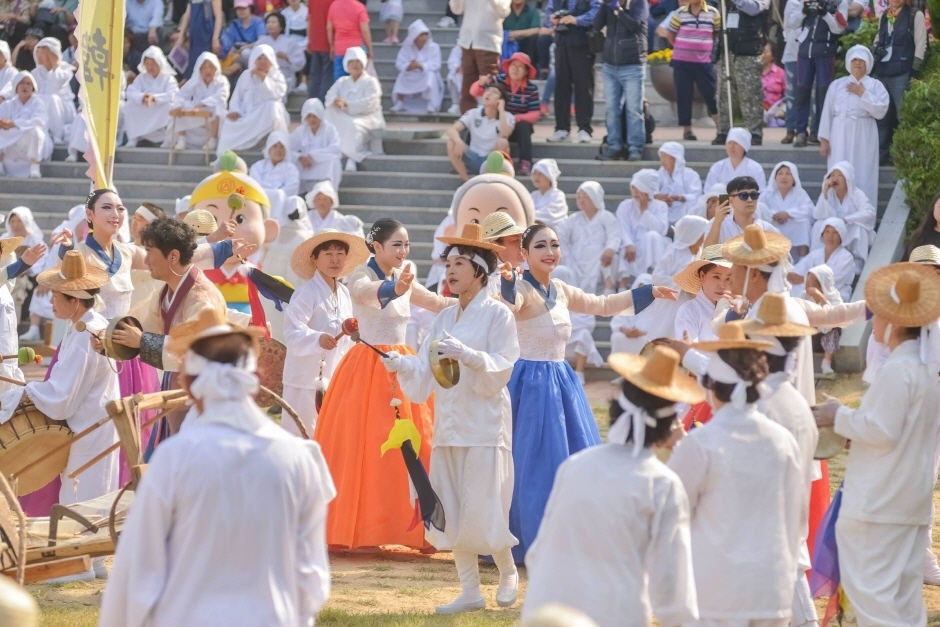
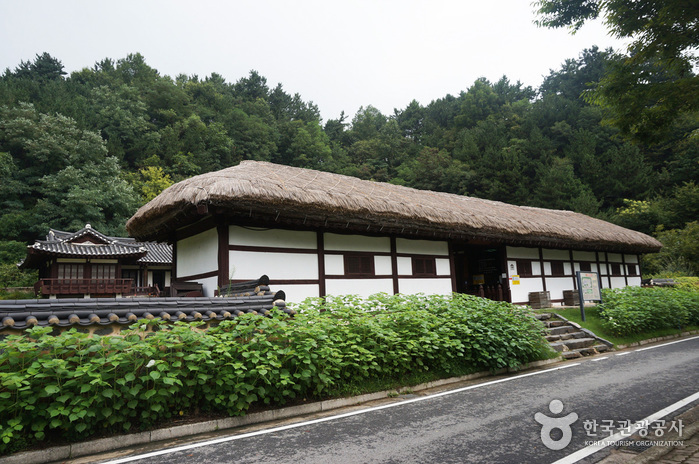
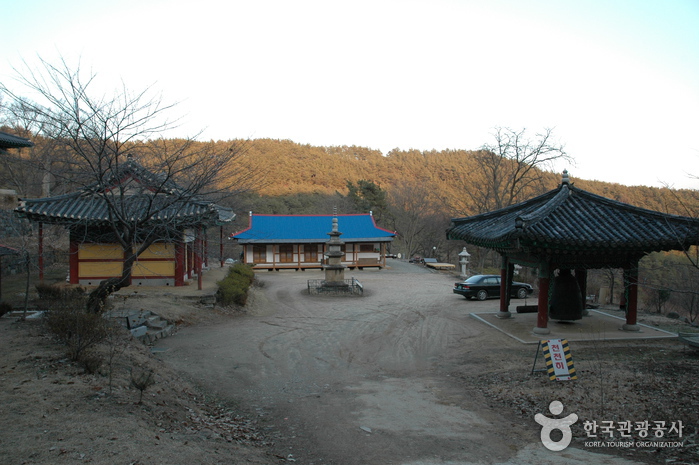

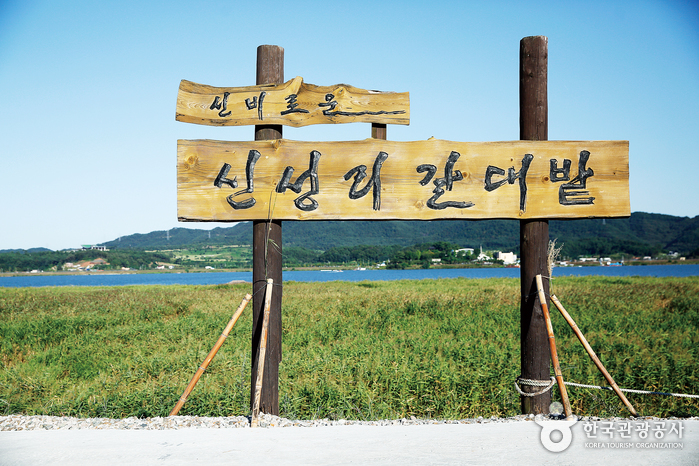
 English
English
 한국어
한국어 日本語
日本語 中文(简体)
中文(简体) Deutsch
Deutsch Français
Français Español
Español Русский
Русский